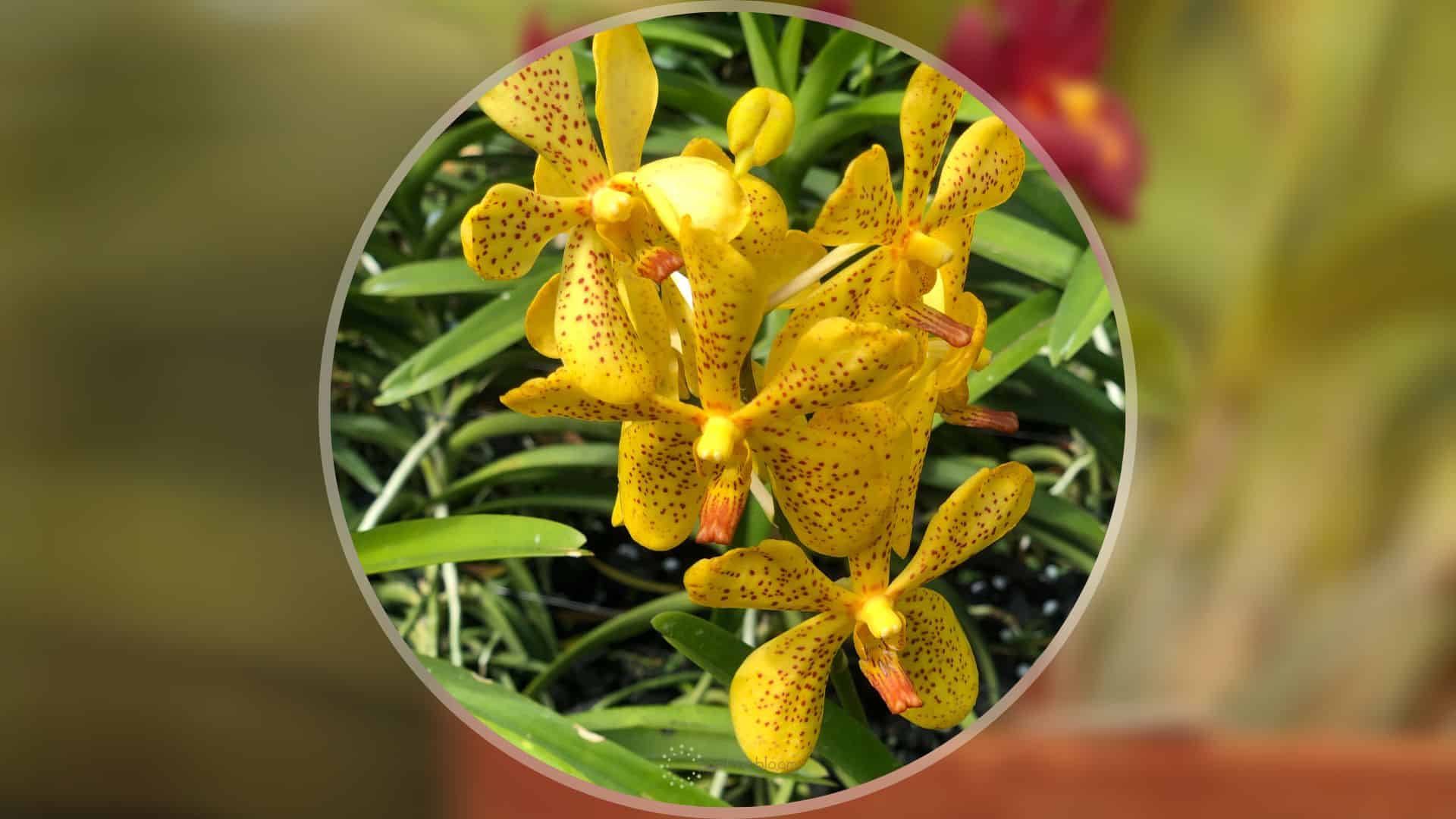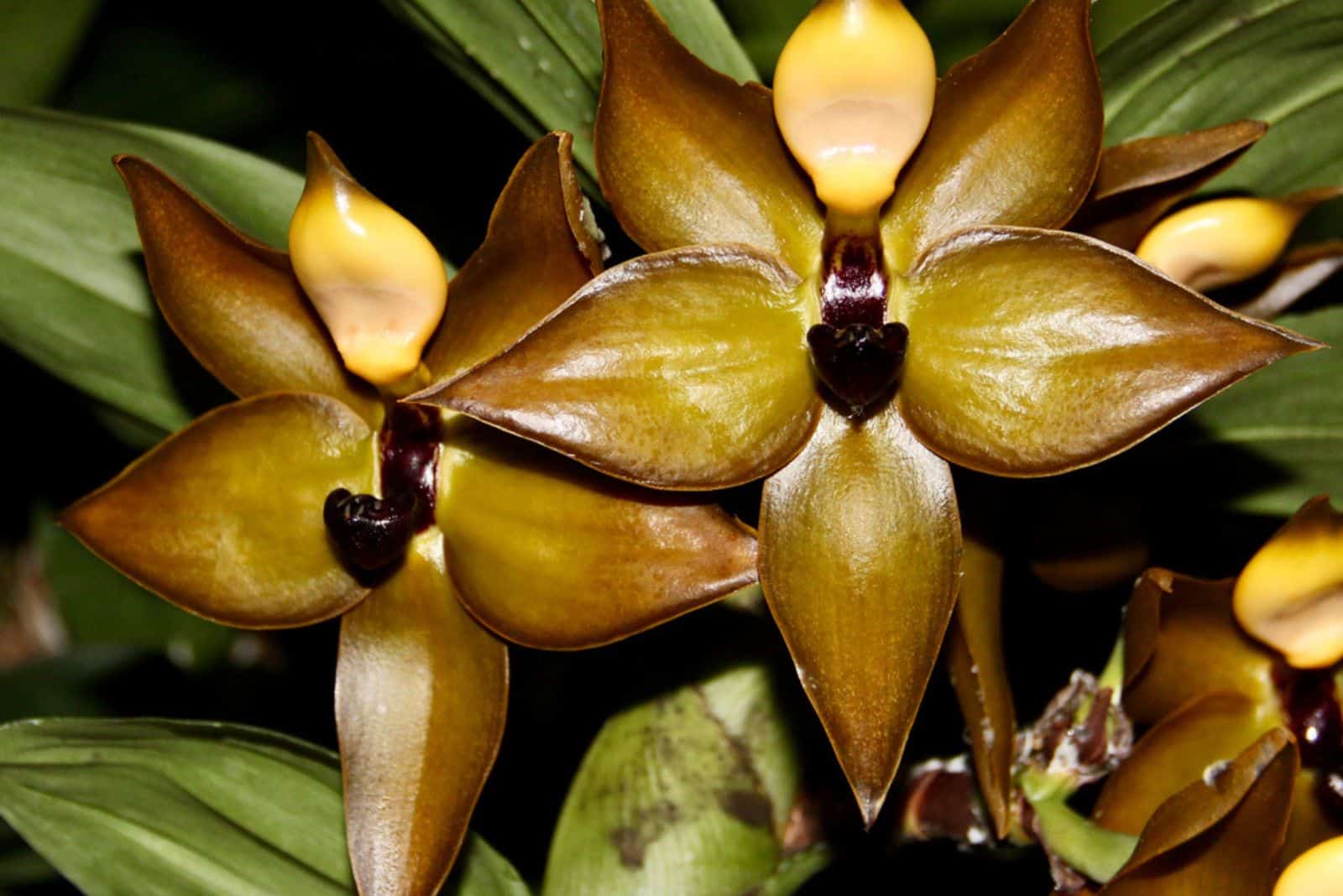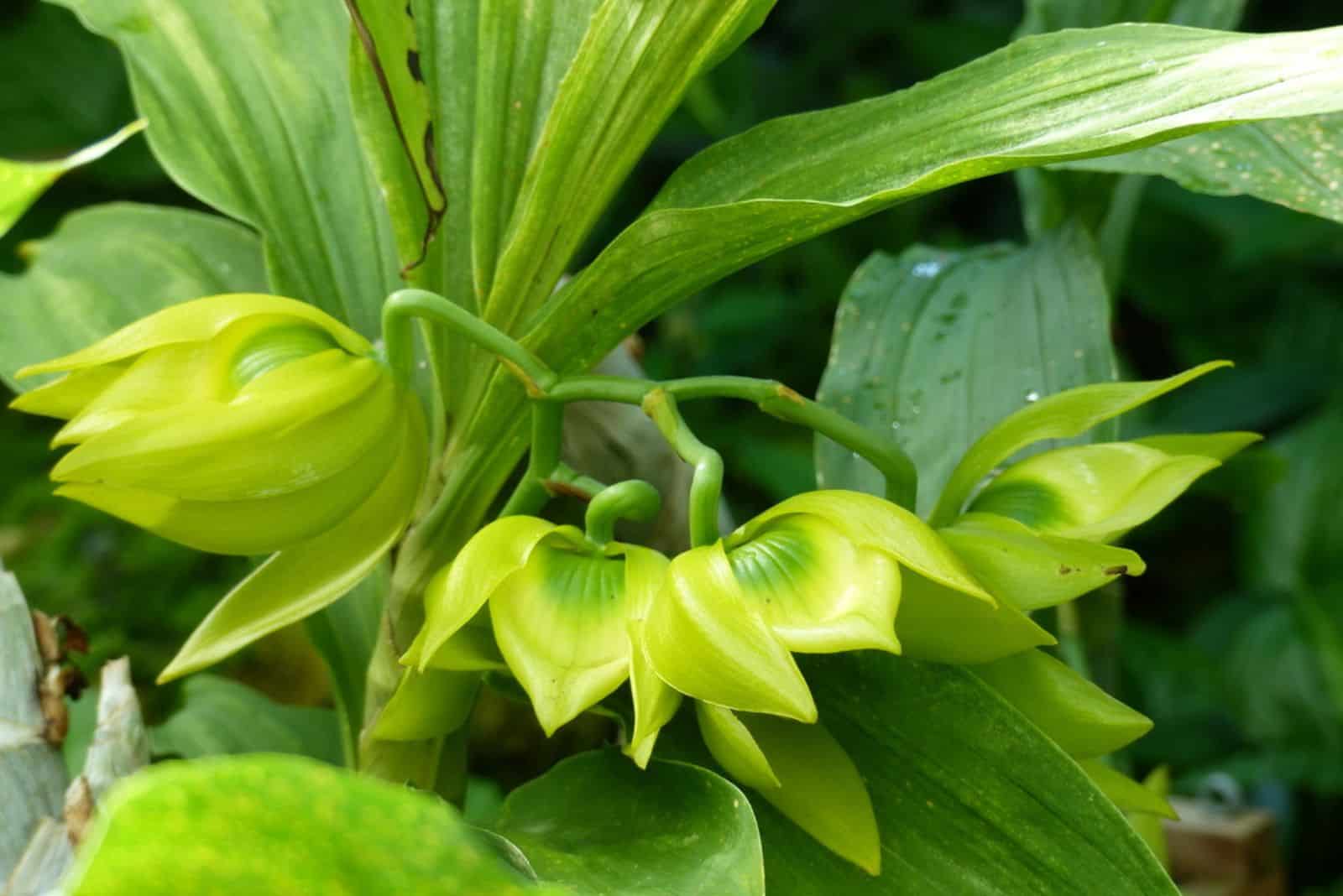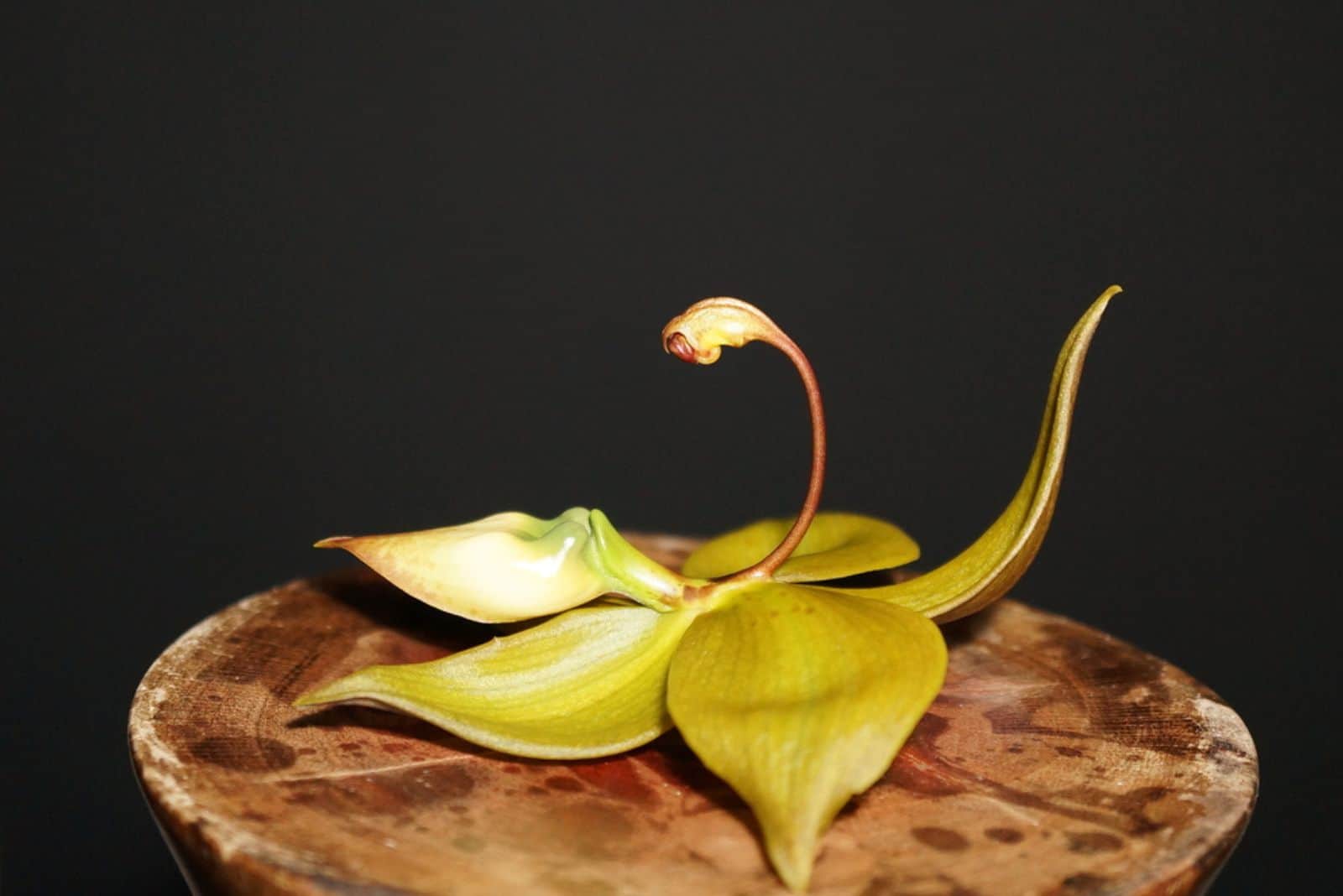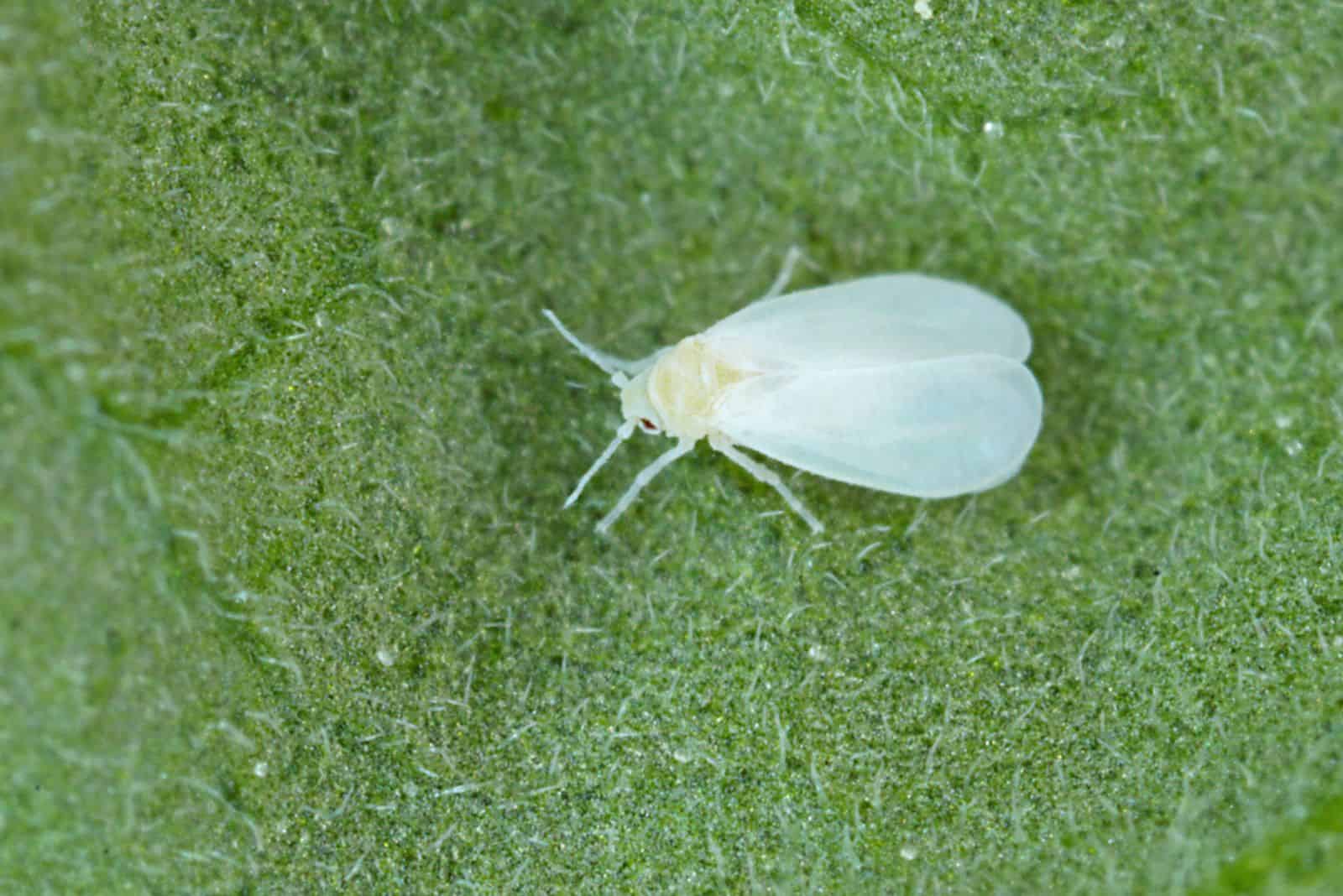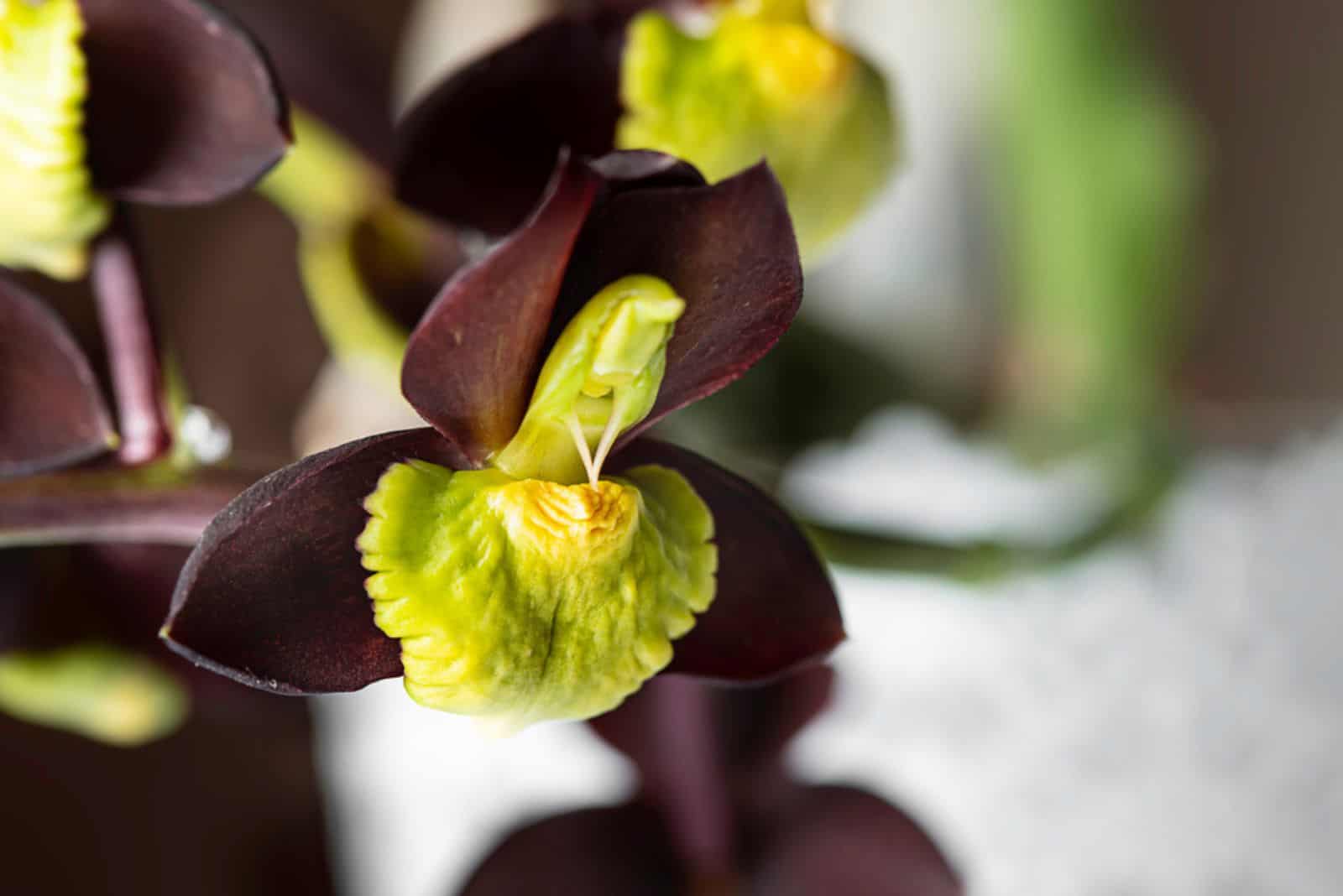Orchids are unique flowers that can transform the appearance of any space. However, they do require a bit of extra care to produce abundant blossoms.
If you provide them with plenty of mild light, warm temperatures, and water, you can have them flowering all year long.
The only hard part is choosing the right one, which is why we’re going to talk about the swan orchid.
This species resembles these magnificent birds and doesn’t need any extra care compared to other orchids.
We’ll discuss its requirements below, introduce some common issues you might come across, and present a couple more varieties you can get to keep your orchid plant company.
Before we get there, let’s learn some basic info about the swan orchids:
[table id=609 /]
The Swan Orchid Care Guide
There are many varieties of swan orchids, such as Cycnoches chlorochilon and Cycnoches cooperi, but the good news is that they all have the same needs (just like other plants from this family).
They need bright light, regular watering, and sphagnum moss or bark to thrive. You also need to fertilize them regularly for them to produce breathtaking blossoms.
Unfortunately, you may sometimes be left wondering “why is my orchid dying?” And the answer is inadequate care.
These plants need your undivided attention, but they’re totally worth the effort.
Let’s learn some orchid care tips.
Light Requirements
Swan orchids prefer bright indirect light. They can tolerate some direct sunlight, but too much can cause the leaves to burn.
Therefore, you should keep them on east or south-facing window sills where they’ll get the light they need.
If you only have a west-facing window available, you should close the curtains or keep your plant a couple of feet away from it.
Also, more sunlight encourages the production of female flowers, whereas lower light levels promote the bearing of male flowers (which are considered showier).
However, complete darkness will hurt your plants, so use some artificial lights if you live in a north-facing home.
Water And Humidity
The best time to water your orchids is when the top few inches of the growing medium are dry. And if you grow this plant in a see-through container, you can always look at its roots and irrigate it when necessary.
Orchids need more moisture once its roots turn silver-green, and if they are bright green and plump, you should wait a couple of days before watering it.
Furthermore, the most common causes of droopy orchid leaves are under and overwatering, so make sure to irrigate this plant 1-2 times a week.
Use lukewarm water to avoid stressing the plant, hydrate it in the morning or late afternoon, and don’t use tap water (if you must, leave it in the air for 24 hours so the chlorine can evaporate).
Humidity
The swan orchid comes from the rainforests of Central and South America, so it’s used to high humidity levels.
Therefore, keep the relative air moisture between 50-70% to keep it healthy. You can achieve these levels by using a humidifier or misting the leaves a couple of times a week.
Temperature
These houseplants prefer warm conditions with a slight drop in temperature at night. They typically require temperatures between 70-85°F during the day and 60-70°F at night.
They’re also sensitive to drafts and sudden temperature changes, so you should avoid placing them near old windows, doors, halls, heaters, below AC, etc.
Soil And Fertilizer
Orchids need excellent drainage, which is why we grow them in soilless mediums. You can plant them in orchid bark, perlite or vermiculite, sphagnum moss, coco coir, LECA pebbles, etc.
You can use these materials on their own or mix them together. For instance, sphagnum moss and coco coir retain moisture and nutrients, while bark ensures proper aeration.
Of course, all orchids have slightly different preferences, and these swans prefer sphagnum moss and fir bark.
Fertilizer
One of the main reasons that your orchid stem is turning yellow is using too much fertilizer or feeding them during dormancy.
Therefore, you should use orchid fertilizers, dilute them as indicated on the package, and feed your plants only during their growing season, starting in spring.
You can fertilize them once a week with a weak solution, but you should flush or replace the growing medium more frequently.
You don’t have to feed the swan orchid after it flowers. Avoid feeding them if you can’t see any new growth or if the plant is weak.
Propagation
There are a couple of different ways to multiply this orchid: from seeds, stem cuttings, by dividing pseudobulbs, or even using the tissue culture method, but that one is best left to the experts.
For instance, when dividing the orchid, you need to ensure it has eight or more pseudobulbs that you can divide to get two grown plants.
Cut and divide it in two parts, the first one starting behind the youngest vegetative growth. Do the same thing for the other side, and if it doesn’t have enough roots, you can remove the stems so that only the youngest growth remains.
Afterwards, pot both plants into separate containers, water them according to their needs, and expose them to bright light.
You can also propagate the swan orchid through stem cuttings. Simply remove the top part of the orchid with some leaves attached, plant it in sphagnum moss, and keep it hydrated.
Expose it to indirect sunlight, and it’ll soon develop roots.
Repotting
Orchids love to be a bit potbound, but you should repot them every one or two years, especially if their roots are all entangled.
There are a couple of things you need to consider when repotting orchids, and the first one is to do it in spring during its active growth period.
Take it out of its container and move it to a slightly larger one, fill it with sphagnum moss or fir bark, and water it thoroughly.
Remove any discolored and mushy roots, expose it to bright light, and maintain higher humidity levels.
Pruning The Cycnoches Orchids
The good news is that you don’t have to prune this orchid. However, you can remove the spent flower spikes to encourage blooming.
Trim dead or damaged stems and roots to keep it healthy. Finally, remove weak and small new growth to make more room for healthy stems.
Common Issues With Growing Orchids
Sadly, orchids can get infested with pests such as spider mites, aphids, whiteflies, mealybugs, etc., but you can control the infestations with horticultural oils and insecticidal soaps that won’t hurt your plant.
The next thing that can go wrong with the snow orchid is overwatering and root rot. If you notice any signs of this disease, such as stunted growth, yellow foliage, and a rotting smell, you should take it out of the pot and remove the rotting roots.
Spray it with fungicide to prevent it from getting this infection again, and repot it into fresh soil and a clean container.
Lastly, if you notice that your orchid is not flowering, the most common causes are inadequate temperatures, lighting, watering, lack of fertilizer, and a need for repotting.
Therefore, if you care for your swan orchid properly, it will reward you with beautiful and abundant blossoms!
Some Common Types Of Orchids
The orchid family has many members, and we couldn’t possibly list them all here. However, there are a couple of varieties that go perfectly with the swan orchid.
If you love bouquets, you can harvest a couple of inflorescences, make an amazing arrangement, and put it in a silver vase. If you are a plant hunter, you should try to find the Dove orchid; it’s worth it!
Vanda
These orchids are famous for their extravagant and attractive flowers that arrive in many shades.
We can find them arranged in cascading flower heads, and their bloom time lasts for several months.
Phalaenopsis Orchids
Phalaenopsis care is almost the same as for the swan orchid. They are usually of soothing pinkish, reddish, and yellow shades, but there is a Blue Mystique cultivar that many growers adore.
Their smaller flowers last for 2-6 months, and they don’t have pseudobulbs, unlike some other species. It blossoms 2-3 times each year, meaning it stays in bloom for most of the year.
Catasetum Orchids
These amazing orchids usually produce flowers in earthy tones (orange, brown, yellow, green, and red). They have a unique appearance and look a bit like butterflies or moths.
Catasetum plants can get about 2 feet tall, so they’re perfect for any windowsill, even the smallest ones.
Cattleya
Pink, purple, yellow, and white flowers make this species suitable for all growers, but what distinguishes it from other varieties is its fragrance.
Cattleya orchids usually have 4-6 flowers per stem, and we can frequently see them in flower arrangements.
Final Thoughts
The swan orchid is a cascading plant perfect for any setting. It requires a bit more care than regular flowers, but that’s the case with every orchid.
You need to keep it in bright indirect light, water it whenever its roots are silver-green (or when the top couple of inches of the potting medium dry out), and keep it in warm temperatures and a humid environment.
You should also fertilize these plants regularly and repot them every once in a while to get a beautiful show of flowers during every blooming season.
And just like any orchid, this one is susceptible to pests and root rot, but we included a couple of tips to help you deal with these issues.
Finally, we brought some popular orchid varieties you can grow together with this species to keep it company.
Enjoy this breathtaking flower, and until next time!

